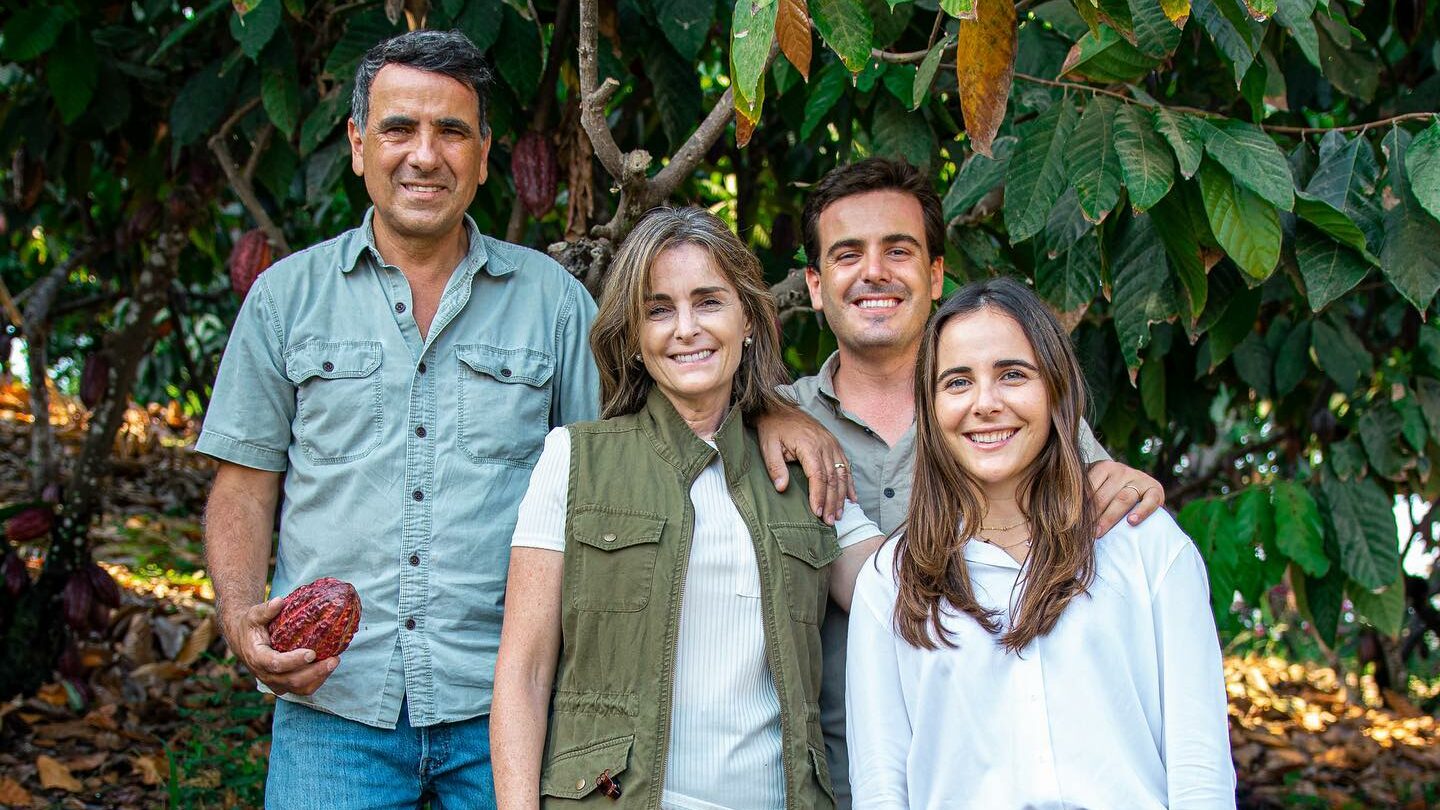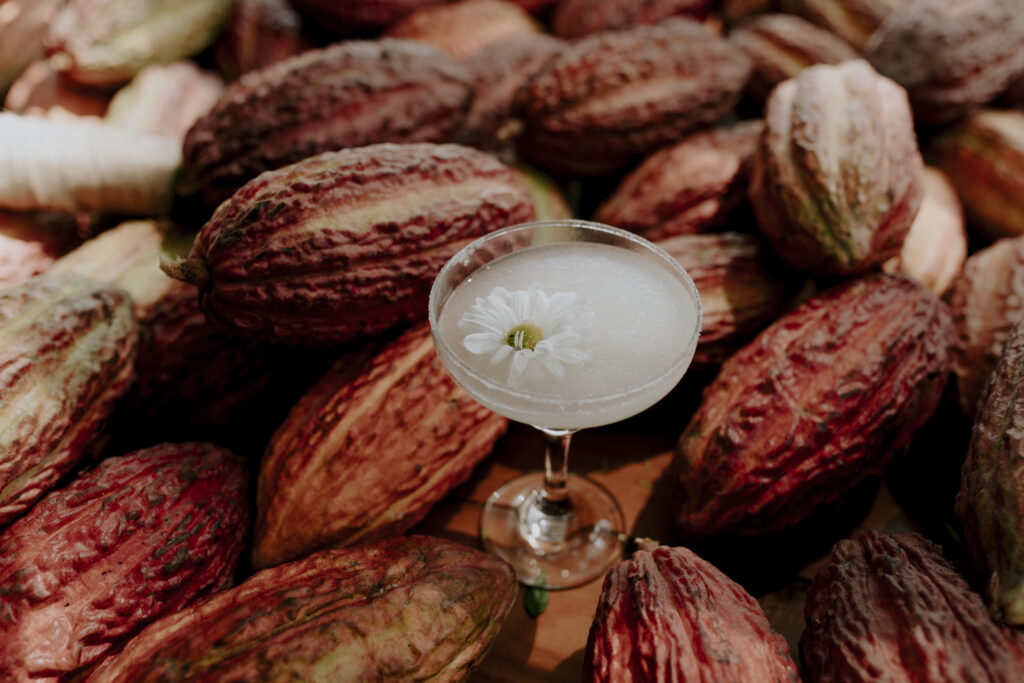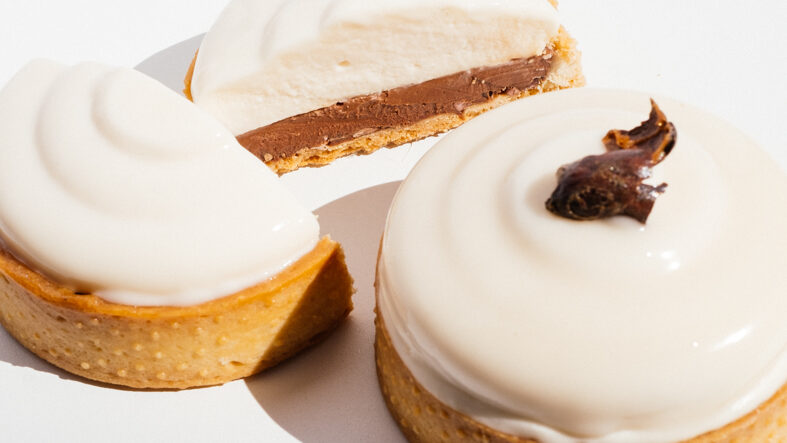In pre-Columbian times, the focus was primarily on the consumption of the raw pulp rather than the seeds that are used to make chocolate today. Historical evidence suggests that people in Central and South America consumed the raw pulp, creating fermented drinks from it, and even utilized it medicinally, including during childbirth. Today, cocoa farmers in humid and hot growing environments often consume the pulp as a refreshing treat. This versatile and juicy, often syrupy puree can be used in a variety of ways. In countries like Mexico, Venezuela and Peru the cacao pulp is traditionally used in the making of homemade drinks and foods: juices, liquors, cocktails, but also ice-creams, jams, confections and baked goods. We have taken inspiration from those who know the product best and source directly from the Saenz family on the Palo Santo farm in Ecuador.

The next generation of cocoa in Palo Santo, Ecuador, is a family focussed in agriculture with environmental impact at the heart of how they grow.
Third Generation cocoa farmers, Esteban and his son, who also takes his name, are the agronomists of the operation. Maria and Claudia work to innovate the business. Together they build upon decades of hard work to expand, while maintaining their environmental principles as they scale. Modernisation has proven successful and their passion for cocoa has brought diversity to what they produce, from decorative pods to delicious pulp.
Cacao pulp can be destructive, damaging soil, even tarmac if not managed. Giving value to te excess pulp that would otherwise drop down the fermentary is an improvement or an up cycling method
There is usually a strong acidic and putrid smell when going around fermentary that are not managing the dropping of pulp that goes with the weighing of pulp freshly harvested and its fermentation either in bags or boxes.
One of the concerns associated with unmanaged cocoa pulp dropping is the impact on soil health. The pulp, when left on the ground, decomposes and releases organic matter, which can alter the soil’s pH levels and nutrient composition. The accumulation of cocoa pulp on the soil surface can lead to soil acidification, potentially affecting the growth of other plants and organisms in the area. The long-term consequences may include reduced soil fertility and diminished biodiversity.

Organic certification has spread the message of their cocoa further around the world, sharing the story of their commitment to meticulous processes that have been refined over the years by Esteban’s family.
We are very proud to work with the Saenz family and celebrate their growth by championing their delicious cacao pulp as well as their beans.
The pulp is separated from the bean at the time of harvest and then pasteurised and packaged to deliver a tropical and tart ingredient that can be used in an assortment of recipes for chocolate making and patisserie.
The pulp refers to the white substance found inside a cocoa pod that covers each cocoa bean. Typically, most of the pulp is used for fermenting harvested beans, serving as the initial stage in transforming them into marketable cocoa. During this process, a chemical reaction occurs. The sugars in the pulp are transformed into alcohol, resulting in a significant improvement in the taste of the cocoa bean by reducing its bitterness. The excessive amount of cocoa pulp is often discarded, although it represents an intriguing byproduct with untapped potential.
It presents itself as an option for consumers seeking lighter indulgences. With its low sugar content and a mere 74.60 Kcal per 100g, it can be considered a low-calorie choice. It furthermore stands out as a fibre-rich food, offering an added nutritional benefit. It is allergen-free and GMO-free, ensuring its suitability for various dietary restrictions and preferences.

Prepare yourself for an explosion of flavours. In a single bite, you’ll experience tastes of pear, lychee, apricot and tropical fruits. Citrus acidity is kicking too!

Cacao pulp offers a range of possibilities in culinary applications. Beyond its novelty, this ingredient can be used in a manner similar to fruit purée, adding a delightful touch to various desserts and confections. Its versatility shines through in sorbets, creams, fruit jellies, and more – making it a valuable addition to both pastry and chocolate creations. The delicate flavour of cacao pulp complements both sweet and savoury recipes, expanding the horizons of culinary exploration and inviting chefs to embark on a culinary journey filled with exciting possibilities.

We can deliver cacao pulp to the UK and Europe, with 90g and 500g pouches available.
Get in touch to find out more! Email teameurope@cacaolatitudes.com
Copyright © 2024 Cacao Latitudes | Conditions of Use | Cookie Policy